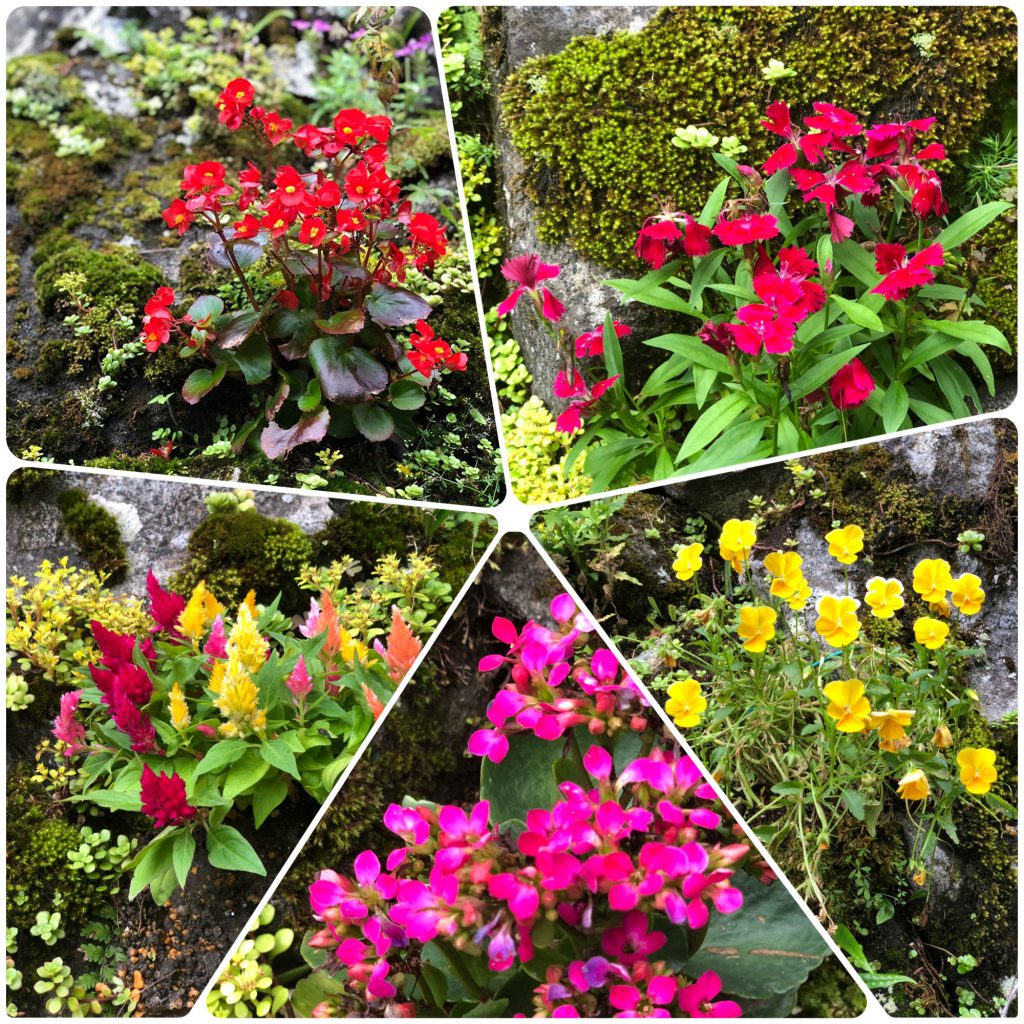
If you follow the approach leading to the inner temple of Shoten-san in Ikoma, you will see small clusters of flowers here and there on the mossy stone wall. To suit Shoten-san, they are the flowers of the world like Sekichiku, Celosia, Florist Kalanchoe, Viola, Begonia. People in the Kansai region familiarly call it “Ikoma no Seiten-san,” but the official name is “Hozan-ji,” a temple of the Shingon Risshu sect. When you get off the cable car that was first laid in Japan, the first thing that surprises you is the big torii(a gateway commonly built at the entrance to a Shinto shrine). In addition, there are a statue of a cow of Tenjin god and a guardian dog unique to a temple of Shinto and Buddhism, which makes you feel strange. The seven deities of good fortune, the Kojin god, the god of the kitchen, and the famous god of the toilet, Ussama Myo, are enshrined, so it is a temple that seems to symbolize Japanese religion. Shoten god is also called Kangiten god, and is a god who brings fortunes. Especially in the merchant town, Osaka , and in Nara and in Kyoto, it has been popular for a long time, and as a god of prosperous business, 3 million worshipers visit every year.
生駒の聖天さんの奥の院に通じる参道を辿ると、苔生した石垣のあちらこちらに小さな花の塊りがみられます。聖天さんらしく、セキチク、ケイトウ、ベニベンケイ、ビオラ、ベゴニアと洋の東西合わせての花々です。関西の人たちは親しみを込めて「生駒の聖天さん」と呼んでいますが、正式名は「宝山寺」でれっきとした真言律宗のお寺です。日本で最初に敷設されたケーブルカーを降りると、まず驚くのが大鳥居。天神様の牛の像もあれば神仏習合の寺院ならではの狛犬もあり、不思議な感覚になります。七福神や、台所の神様といわれる荒神様、名高いトイレの神様・ウスサマ明王などまでもお祀りされていますから、日本の宗教を象徴するかのようなお寺です。聖天とは歓喜天ともいい、財服をもたらす神様で、特に商人の町・大阪や奈良、京都では昔から親しまれ、現在まで商売繁盛の神として、年間300万人の参拝客が訪れます。
